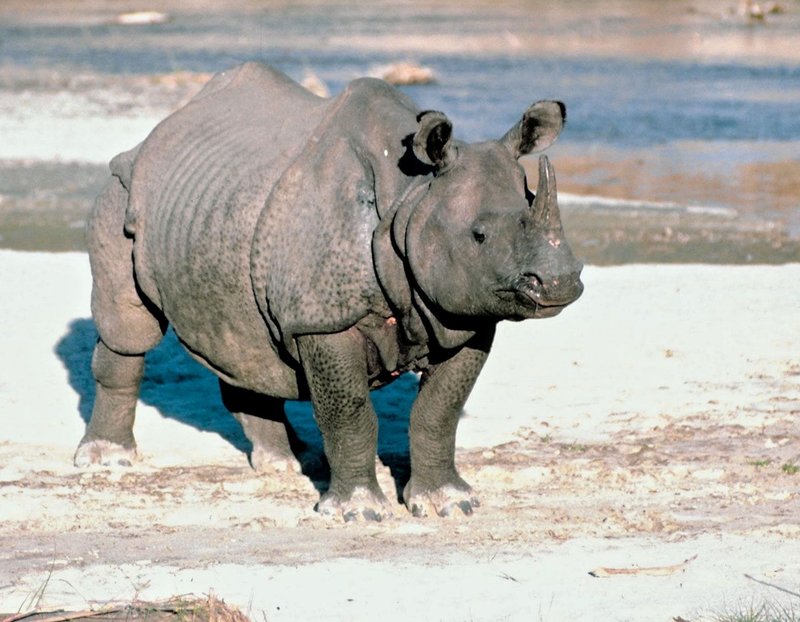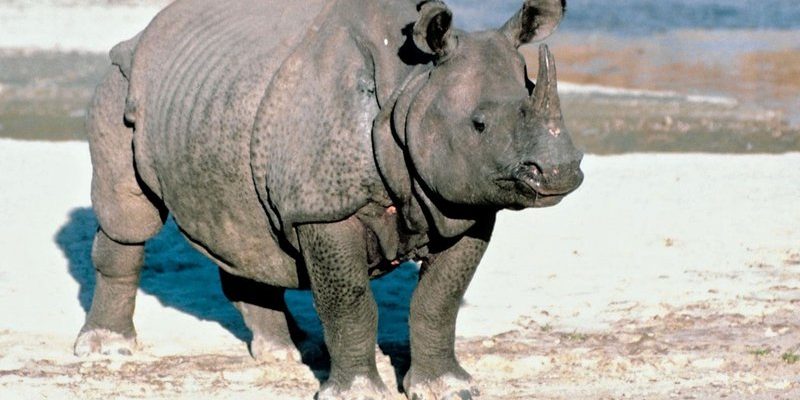
Indian rhinoceroses are fascinating, not just for their size and impressive armor-like skin, but also for the specific environments they call home. But where exactly do these majestic giants roam? Let’s dive into their habitat and distribution, exploring what makes their homes so special and why they matter for conservation.
Understanding the Indian Rhinoceros
The Indian rhinoceros, or *Rhinoceros unicornis*, is one of the largest living rhinoceros species. With its distinctive single horn and thick, folded skin, this animal stands out in more ways than one. These rhinos are primarily found in the grasslands and forests of the Indian subcontinent. The unique geographical features of this area greatly influence their habitat preferences, which we’ll explore further.
Unlike some of their cousins, the Indian rino thrives in habitats rich in water sources. Think of wetlands and river valleys where they can wade, wallow, and cool off. They have a fascinating ability to adapt to different environments, but certain conditions are crucial for their well-being. Understanding these can help us protect them.
Geographical Distribution
So, where do Indian rhinoceroses actually live? Their distribution is primarily concentrated in two countries: India and Nepal. In India, you can mainly find them in the Kaziranga National Park, a UNESCO World Heritage site known for its lush landscapes and rich biodiversity.
In addition to Kaziranga, other protected areas in India, such as Manas National Park, also offer refuge for these magnificent creatures. Meanwhile, in Nepal, you can spot them in Chitwan National Park, which is another critical habitat providing fertile grounds for this species.
Each of these parks plays a vital role in maintaining the Indian rhino population. For instance, Kaziranga boasts a growing population due to effective conservation efforts, while some areas face challenges from habitat loss and poaching.
Preferred Habitat Type
You might be wondering what kind of places Indian rhinos prefer to live in. Their favorite habitats are typically lush, open grasslands mixed with forests and wetlands. These environments provide a rich source of food, like grasses and aquatic plants, which the rhinos love to munch on to maintain their hefty size.
Moreover, the presence of shallow water bodies is essential. Not only do these areas offer drinking water, but they also give rhinos a place to retreat from the heat. You can often see them wallowing in mud, which helps in keeping their skin cool and free from parasites.
However, it’s important to note that Indian rhinoceroses are quite sensitive to changes in their habitat. Activities like agriculture and urban development can intrude on their living spaces, making it difficult for them to thrive.
Population and Conservation Status
The Indian rhinoceros is classified as “Vulnerable” on the IUCN Red List. This means they’re at risk of extinction without proper conservation efforts. Their population faced a steep decline due to poaching and habitat destruction in the past. Thankfully, conservation programs have made a positive impact, especially in Kaziranga.
As of recent estimates, there are approximately 3,500 Indian rhinoceroses left in the wild. Conservation measures include anti-poaching patrols, habitat restoration, and community engagement programs. By involving local communities in conservation efforts, we can ensure that they see the value in protecting these unique creatures.
It’s crucial for everyone to play a part in their conservation. Awareness campaigns and educational programs help people understand the importance of preserving these habitats and the animals that inhabit them.
Threats to Their Habitat
Even with conservation efforts in place, Indian rhinoceroses face significant threats. Habitat loss due to agricultural expansion is one of the biggest challenges. As more farmland encroaches on their natural environments, it limits the space available for rhinos to roam freely, mate, and find food.
Poaching for their horns remains a critical threat as well. The demand for rhino horn in traditional medicine and as a status symbol drives illegal hunting. Protecting their habitats is essential to combat this issue, as more secure areas can reduce poaching risks.
Lastly, climate change also poses a potential threat to the grasslands and wetlands that rhinos require. Rising temperatures and changing rainfall patterns can alter their habitat, making it less suitable for survival.
Connecting People and Conservation
Protecting Indian rhinoceroses isn’t just about saving an animal; it’s about fostering a connection between people and nature. Many conservation programs involve local communities, helping them understand the value of wildlife and ecosystems. When the local population sees the benefits of protecting their environment, they’re more likely to support conservation efforts.
Additionally, ecotourism can play a crucial role. When tourists visit national parks to see these magnificent creatures, it creates economic opportunities for local communities. This, in turn, helps build support for ongoing conservation work, which is essential for the long-term survival of the Indian rhinoceros.
By spreading awareness and directly involving people in conservation, we can create a brighter future for these animals and their habitats.
In summary, the Indian rhinoceros calls the grasslands and forests of India and Nepal its home, with national parks like Kaziranga and Chitwan serving as crucial sanctuaries. Understanding where they live helps us see the bigger picture of their conservation. By protecting their habitats and involving local communities in these efforts, we can ensure that future generations may also bond with this incredible species.
So, the next time you think of the Indian rhinoceros, remember it’s not just a fascinating animal; it’s a symbol of the beauty and fragility of nature itself. Let’s work together to keep their homes thriving for years to come!

